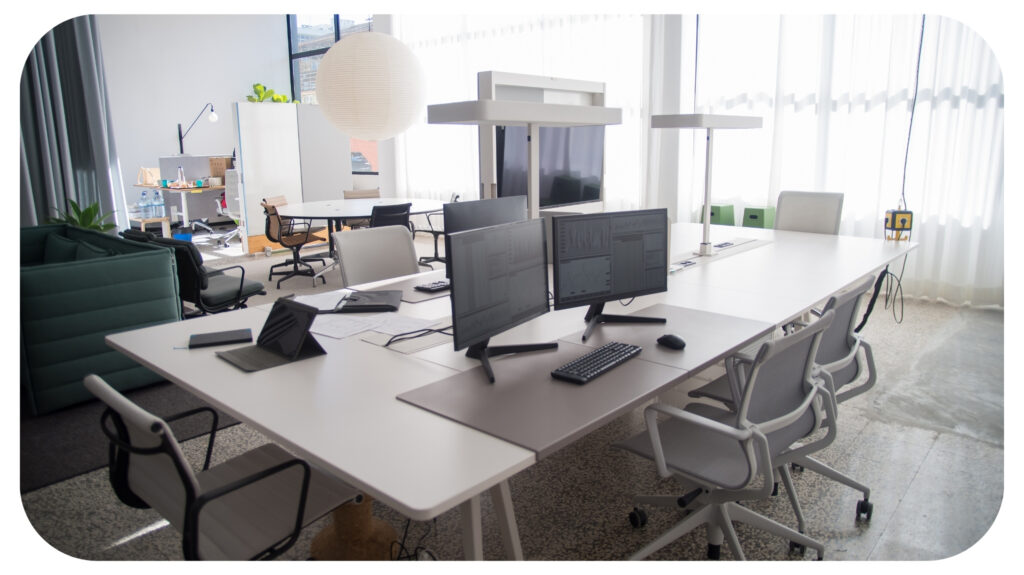Crafting the Perfect Workspace: Enhancing Efficiency with the Right Equipment

Key Takeaways
- Understand the importance of selecting the right workspace equipment to boost productivity.
- Explore practical tips to arrange a workspace effectively.
- Discover current trends and insights related to workspace optimization.
Table of Contents
- Introduction: Why Workspace Equipment Matters
- The Role of Mobility in a Modern Workspace
- Choosing the Right Casters for Your Needs
- Boosting Efficiency with Proper Equipment Arrangement
- Benefits of Investing in Quality Workspace Tools
- Current Trends in Workspace Design
- Conclusion: The Future of Workspaces
Introduction: Why Workspace Equipment Matters
In today’s fast-paced work environment, having strong, reliable, and flexible tools is more crucial than ever. Whether rearranging an office layout or facilitating a collaborative space, the right equipment, such as industrial wheels, is indispensable in ensuring seamless operations. These components can provide the necessary mobility to transform static environments into dynamic hubs of creativity and efficiency, thus supporting the ever-evolving needs of modern workplaces. Investing in appropriate tools equips your workspace to become a powerhouse of productivity. Beyond just enhancing aesthetics, carefully selecting tools that promote flexibility and adaptability significantly boosts workplace efficiency. This allows teams to work smarter and faster, reducing unnecessary time spent on manual rearrangements or adjustments and ultimately helping to create a more harmonious work environment.
The Role of Mobility in a Modern Workspace
Mobility is essential in today’s ever-changing work environments, where flexibility is key to maintaining productivity. Whether for reconfiguring layouts or fostering collaborative interactions, the ability to move equipment easily enhances operational fluidity and adaptability. As highlighted by Harvard Health, integrating ergonomic solutions like adjustable seating and mobile desks can markedly improve workplace well-being. This, in turn, augments productivity by reducing fatigue associated with prolonged stationary postures, making it more conducive for employees to remain active and engaged.
Choosing the Right Casters for Your Needs
Selecting the appropriate casters for your equipment ensures functionality and convenience in any workspace. The right casters facilitate smooth movement across various surfaces, accommodating the dynamic nature of modern workspaces.
Types of Casters
- Rigid Casters are best for straight-line movement. They allow easy transport across open spaces without manual steering, making them ideal for setups where frequent direction changes are unnecessary.
- Swivel Casters: These offer 360-degree rotation for superior maneuverability in tight spaces, such as crowded offices or between workstations. They are perfect for equipment that needs frequent repositioning or precise navigation within a confined area.
- Brake Casters: Essential for providing stability, locking wheels in place when equipment needs to remain stationary, preventing unwanted movement, and ensuring the safety of both equipment and personnel.
Factors to Consider
When choosing casters, consider factors such as the type of floor surface, weight capacity requirements, and the specific mobility needs of your workspace. Selecting casters that align with these criteria ensures smoother operations and minimizes floor wear, thus extending the lifespan of the flooring and mobility equipment. By evaluating these elements, organizations can make informed decisions that enhance the functionality and ergonomics of their work environments.
Boosting Efficiency with Proper Equipment Arrangement
Best Practices for Equipment Layout
- Arrange spaces to facilitate communication without disrupting productivity. Utilize partitions smartly to create open yet segmentable spaces that encourage dialogue while maintaining individual focus.
- Maximize space by utilizing multi-functional furniture. This keeps work areas versatile and efficient and allows seamless transitions between different work activities throughout the day.
Tools to Enhance Mobility and Accessibility
Investing in mobile workstations and adjustable platforms can massively increase overall flexibility. These tools support a dynamic work atmosphere that adapts to evolving team needs. They make it easier to customize the workspace setup in response to specific tasks or projects, thereby enhancing the collective productivity of the team.
Benefits of Investing in Quality Workspace Tools
Investing in high-quality tools ensures durability and creates a productive workspace environment. Quality tools reduce the chances of unexpected equipment failures or downtimes, thus minimizing disruptions caused by maintenance needs. This leads to cost savings over the long term, allowing organizations to allocate resources more effectively toward their strategic goals. Additionally, with reliable equipment, teams can focus more on delivering value, knowing that their work environment is equipped to support their efforts.
Current Trends in Workspace Design
The constantly evolving nature of workplaces has given rise to new trends focused on sustainability and employee well-being. In particular, there is a growing emphasis on integrating sustainable materials and energy-efficient designs in the modern workspace. Businesses increasingly incorporate environmentally friendly practices into their office designs to create more innovative, resource-efficient spaces. This movement towards sustainable work environments reduces the ecological footprint and promotes a healthier, more mindful approach to workplace culture.
Conclusion: The Future of Workspaces
As workplace designs evolve, the importance of creating adaptable, efficient, and sustainable workspaces will only grow. Ensuring these spaces are equipped with the right tools and equipment is vital for fostering employee well-being while meeting organizational productivity goals. Such investments address current needs and prepare for a future where agility and efficiency are paramount. As companies strive to attract and retain top talent, the workspace becomes critical in reflecting their values and commitment to supporting their workforce.
Most Inside
Most Inside offers high-quality recommendations and valuable updates to enhance all aspects of your life, providing premium guidance and enriching experiences.




